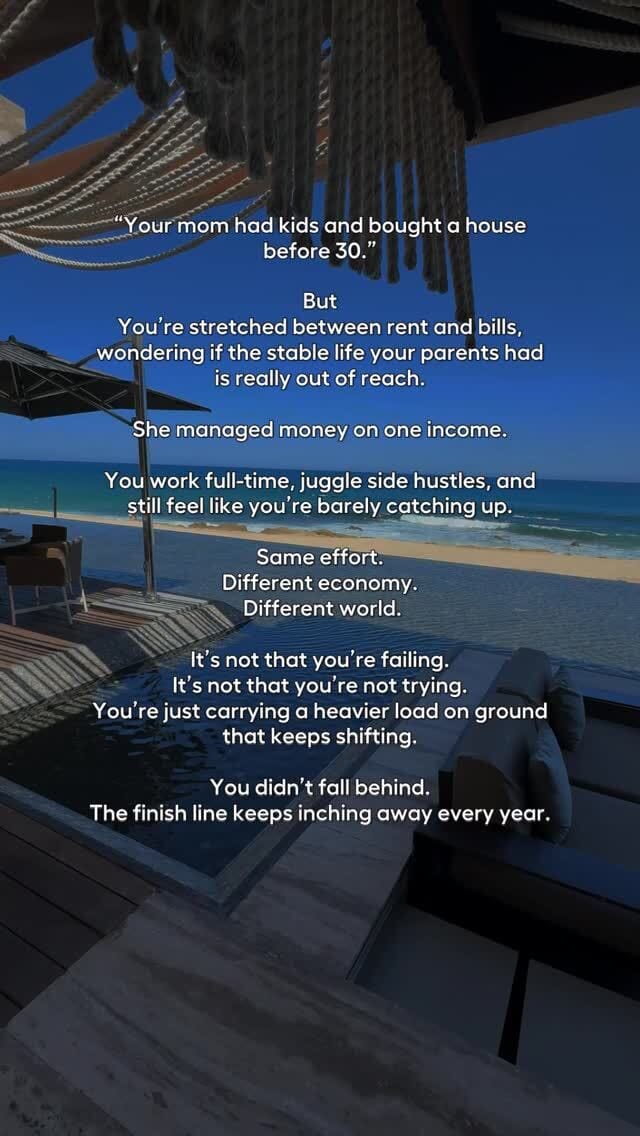- Start Doing Well
- Posts
- Is the dollar losing its main character energy?
Is the dollar losing its main character energy?
💵 💵 💵
The dollar isn’t untouchable anymore, retirement isn’t all sunshine and leisure, and family size is shrinking fast.
The world we’re living in now asks for more flexibility: in how we invest, how we plan for the future, and how we measure “success.” This week’s issue looks at the cracks in the dollar’s dominance, why more parents are choosing to go “one and done,” and the hidden retirement costs catching people off guard.
Most of all, it’s a reminder that if you feel behind, you’re not alone. The rules of money have changed, and your strategy needs to change with them.
Here’s what’s inside:
P.S. If you want to talk through your own finances, you can book a free 1-hour coaching call here ☎️
Is the dollar losing its main character energy?
The U.S. dollar has been the world's dominant reserve currency for decades. But that status is looking shakier than it used to.
De-dollarization is the fancy term for countries moving away from using the U.S. dollar as their primary currency for trade and reserves. The latest movement kicked off in 2022 following U.S. sanctions on Russia, but it's accelerated in 2025 with Trump's aggressive tariffs and isolationist policies disrupting U.S. alliances.
The numbers tell the story: As of 2024, the dollar represented 57.8% of global foreign exchange reserves, down from over 70% in 2000. The U.S. Dollar Index has dropped 9.9% year to date as of September 24, 2025.
Countries like China, India, and Brazil are exploring ways to trade directly with each other in their own currencies, cutting the U.S. dollar out of the equation. The BRICS bloc (Brazil, Russia, India, China, South Africa, plus six new members) has even floated the idea of creating their own currency, though there's been little actual progress.

What this means for your money:
💰 Keep some diversification: Don't panic, but consider holding some assets in other currencies or gold as a hedge. Your entire portfolio shouldn't be dollar-dependent.
💰 Watch your purchasing power: A weaker dollar means imported goods cost more. Budget accordingly and consider buying quality items now rather than waiting.
💰 Invest in real assets: Real estate, commodities, and inflation-protected securities can help preserve value if dollar weakness continues.
💰 Stay informed: Economic shifts take time. Monitor the trends, but don't let fear drive your decisions.
The rise of ‘one and done’ parenting
More parents are deciding that one child is enough. Rising childcare costs, pressure to balance careers, and the sheer expense of raising a child in today’s economy are major drivers. Add in lifestyle preferences and delayed family planning, and the “one and done” choice is becoming more common.
For families, the ripple effects are real. Kids may benefit from more focused resources, but they also grow up without siblings to share future responsibilities (from splitting the cost of elder care to navigating inheritance).

What this means for your (future) family:
💜 Reframe the budget: Raising one child costs less overall, but families often funnel more into premium schools, activities, or travel. Decide early if you want to upgrade experiences or bank the difference for long-term goals.
💜 Plan for elder care realities: With no siblings to share the load, an only child may shoulder both financial and logistical care for parents. Consider long-term care insurance, estate planning, and open conversations now to ease that future burden.
💜 Prioritize wealth transfer: An only child will inherit everything… which means taxes, trusts, and legal structures become even more important to get right. A clear estate plan ensures assets pass smoothly without unnecessary costs.
💜 Invest in community: Without siblings, social and financial “safety nets” matter more. Encouraging your child to build strong friendships, mentorships, and networks is an underrated but valuable part of financial security.
Thinking about starting (or growing) your family? We’ll help you create a roadmap that makes budgeting for a child less overwhelming. Book a free 1-hour coaching call here.
Retirement is supposed to be the reward after decades of work. But the financial reality often brings curveballs. Here are the four big expenses to plan for now:
1️⃣ Healthcare & long-term care
Even with Medicare, premiums, prescriptions, and procedures add up. Nursing home care can run $9,000–$10,000 a month, and assisted living or in-home care isn’t cheap either. Starting early with long-term care insurance can ease the hit.
2️⃣ Housing costs (beyond the mortgage)
Mortgage-free doesn’t mean cost-free. Property taxes, insurance, maintenance, and HOA fees keep rising. Home insurance alone has jumped nearly 70% in the past five years.

3️⃣ Taxes in retirement
From Social Security taxes to Required Minimum Distributions, many retirees are surprised by their tax bill. Selling a home or investment can also trigger capital gains.
4️⃣ Lifestyle inflation
Travel, eating out, and hobbies often make retirement spending higher than expected, not lower.
💡 The bottom line: Visualize the lifestyle you want and stress-test it against real costs. Then revisit your plan every year so you don’t get blindsided.
Want to feel confident about your retirement plan (and the rest of your finances too)? We can help you map your finances out. Book a free 1-hour coaching call here.ot too late
Same effort, different economy
It’s easy to compare yourself to your parents’ timeline and feel like you’re lagging. There’s kids, house, financial stability… and all with the pressure to achieve these before your 30s or 40s.
But the truth is, the world has shifted: housing is more expensive, wages haven’t kept pace, and building security now takes more juggling than it did a generation ago.
If you feel behind, remember:
💜 Spend with intention: Focus your money on what matters and cut what doesn’t.
💜 Grow your income: Invest in skills, side hustles, or certifications that expand your earning power.
💜 Automate progress: Set up savings and debt payments to run in the background so you’re always moving forward.
👉 Want help building a financial plan that works in today’s economy? Book a free 1-hour coaching call here.
Worth the Click This Week
💸 High-yield vs. traditional savings accounts: A complete breakdown of the difference and which one is right for you. If you're still using a traditional account, this might change your mind. Get the details »
🎁 Amazon Prime settlement update: Amazon is paying $2.5 billion after allegedly tricking customers into Prime subscriptions. If you signed up between 2019-2025, you might automatically get up to $51 back. Check your eligibility »
💳 Credit card delinquencies hit record high: More Americans are falling behind on credit card payments than ever before. What this means for your credit and how to protect yourself. Read the warning signs »
📈 Fed interest rate update: Inflation met expectations in August, keeping the Fed on track to lower interest rates. What this means for your mortgage, savings, and loans. Get the full story »


